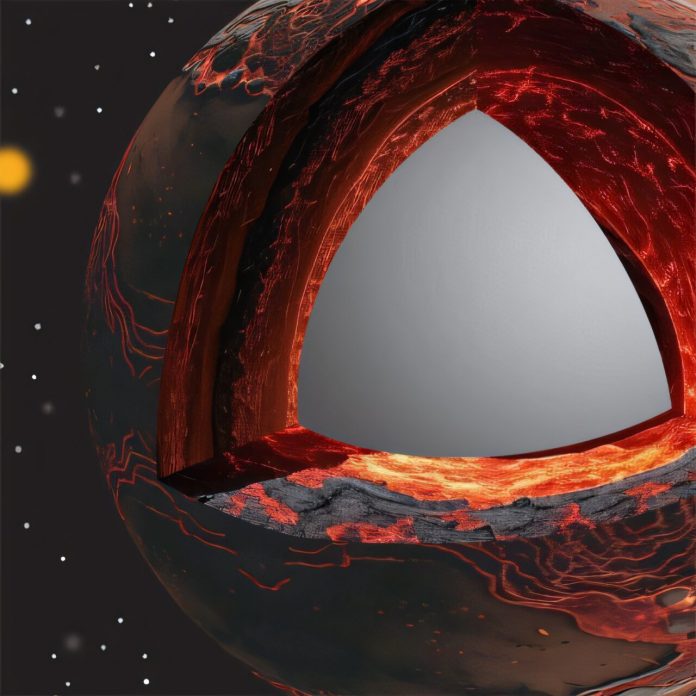
Deep under our feet—almost 1,800 miles below the surface—scientists have found two huge and mysterious structures that may hold clues to how Earth formed and why it became a planet that can support life.
These structures have puzzled researchers for decades because they are unlike anything else inside the planet.
The new study, published in Nature Geoscience, was led by Yoshinori Miyazaki from Rutgers University. His team believes these strange formations may be leftovers from Earth’s earliest days, when the whole planet was covered in a deep ocean of hot, melted rock.
These unusual structures are called large low-shear-velocity provinces and ultra-low-velocity zones.
The first type is made of massive blobs of hot, dense rock—each the size of a continent. One sits below Africa and the other below the Pacific Ocean.
The second type is made of thin, molten layers that cling to Earth’s core like small puddles of lava. Both kinds slow down seismic waves, which tells scientists that their chemical makeup is very different from the rest of the mantle.
For many years, scientists thought Earth’s mantle should have settled into neat, clear layers as the early “magma ocean” cooled, much like juice separating into layers in the freezer. But that’s not what we see today.
Instead, these giant blobs and molten patches sit in messy piles at the bottom of the mantle, raising a big question: what went wrong with the original theory?
Miyazaki and his team propose a new answer.
They suggest that as Earth cooled over billions of years, tiny amounts of material slowly leaked from the core into the mantle—elements like silicon and magnesium drifting upward.
This mixing prevented the mantle from forming strong layers and created the strange compositions scientists observe today. According to the researchers, the giant blobs may be hardened leftovers from an ancient “basal magma ocean” that was contaminated by material escaping the core.
This discovery does more than explain weird deep-Earth structures. It may also help scientists understand why Earth developed oceans, a breathable atmosphere and stable climate—while Venus became extremely hot and Mars lost most of its air. The way heat and chemicals move between the core and mantle could influence volcanic activity, surface temperatures and even how long a planet can hold onto its atmosphere.
The study also suggests that these deep structures might feed volcanic hotspots such as Hawaii and Iceland, showing that Earth’s surface and deep interior are more connected than we once thought.
The researchers say that every new clue helps build a clearer picture of Earth’s early history. Even though we cannot see these deep structures directly, understanding them may help explain why Earth is such a rare and life-friendly world.
“Each piece of evidence brings us closer to understanding how Earth became the planet we know today,” Miyazaki said.
Source: Rutgers University



